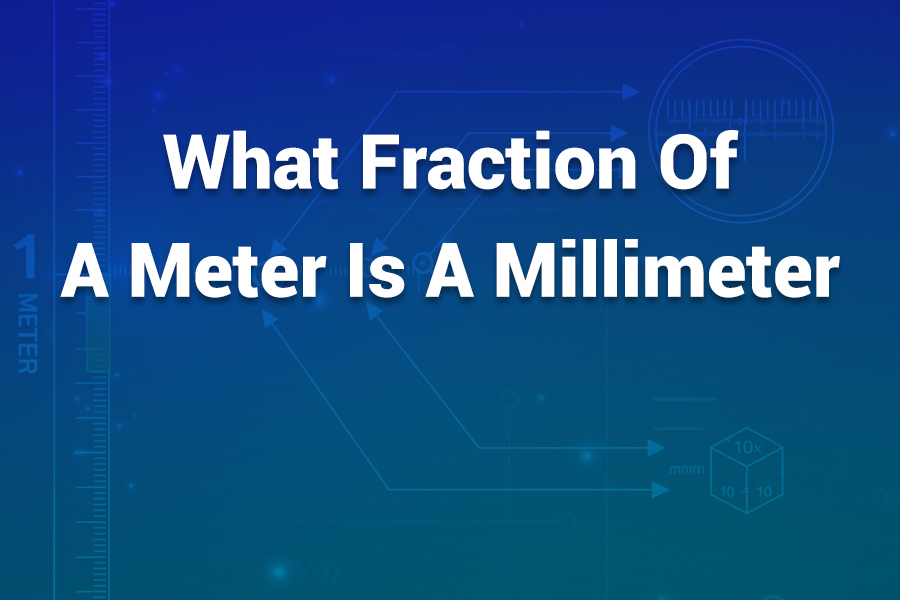Understanding metric measurements can seem trivial—until you need absolute precision. One common question that arises in schools, engineering, and everyday life is: what fraction of a meter is a millimeter?
In this article, I explain that clearly and show you how to convert, simplify fractions, use real-world examples, and avoid common mistakes in measurement. In this article you will learn the fraction relationship, methods to convert, real applications, and tips to master metric precision.
The Fraction of A Meter That Is A Millimeter
Every day, engineers, builders, students, and designers rely on metric units to measure with accuracy. A meter is our base unit for length in the system, and millimeters let us express very small lengths precisely.
To understand how small a millimeter is relative to a meter, we express it as a fraction. In everyday and scientific contexts, knowing that fraction helps you convert, compare, and plan designs. Below we’ll break down the fraction, show examples, explain conversion tricks, and discuss pitfalls in using metric units.
What Does “Milli-” Mean in Metric Units?
In the metric system, prefixes modify the base unit (meter). “Milli-” means “one thousandth.” That means that a millimeter is the same as one one-thousandth of a meter. So when you see “mm,” you know it’s a thousandth piece of a full meter.
Exact Fraction: 1/1000 of a Meter
By definition:
- 1 meter = 1,000 millimeters.
- Therefore, 1 millimeter = 1 ÷ 1,000 meters.
Expressed as a fraction:
[ \frac{1 ; \text{mm}}{1 ; \text{m}} = \frac{1}{1000}. ]
So a millimeter is 1/1000th of a meter.
Converted to decimal, that’s 0.001 meters.
Simplified Explanation with Numerator and Denominator
Think: you have 1,000 equal parts in a meter. Each part is one millimeter. If you take one part, that’s one of 1,000 slices. So the fraction is 1 out of 1,000, which is 1/1000.
How to Express Other Millimeter Amounts as Fractions of a Meter
You can scale that base idea. For example:
- 5 mm = 5/1000 = simplify numerator and denominator by their greatest common divisor. Here, 5 and 1,000 share 5 → gives 1/200. So 5 mm = 1/200 meter.
- 30 mm = 30/1000 = divide both by 10 → 3/100. So 30 mm is 3/100 of a meter.
- 250 mm = 250/1000 = simplify dividing by 250 → 1/4 (0.25). So 250 mm is one quarter of a meter.
- 800 mm = 800/1000 = divide by 200 → 4/5. So 800 mm is four-fifths of a meter.
In each case:
- Write mm amount over 1000
- Simplify by GCD (greatest common divisor)
Why This Matters in Real Use
Engineers, architects, machinists, and even hobbyists often deal in millimeters when designing parts, spacing, or tolerances. Knowing the fraction helps when specifying parts in both metric and non-metric systems, or when doing sanity checks.
Quick Conversion Tricks
- To convert mm to meters, divide by 1000.
- To get a fraction, put mm over 1000, then simplify.
- To convert a meter fraction back to mm, multiply by 1000.
Examples in Everyday Life
- A thickness of a smartphone’s case: ~1 mm → that is 1/1000 of a meter.
- A sheet of paper ~0.1 mm → 0.1 mm = 0.1/1000 = 1/10,000 or simplified decimal = 0.0001 m.
- A wooden plank length 250 mm → 250/1000 = 1/4 m.
- A machine tolerance of ±0.5 mm → that is ±0.0005 m.
These conversions help you think consistently whether you’re dealing in millimeters or meters.
Avoiding Common Mistakes
Sometimes people misplace decimal points, forget to simplify, or misinterpret “millimeter” as “one thousand meters.” Always remember: “milli-” means one thousandth, not thousand. Also never forget to divide by 1000 when converting to meters.
Metric Hierarchy and Relation to Other Units
Knowing how a millimeter fits into the bigger scheme can help:
- 1 meter = 1,000 millimeters
- 1 meter = 100 centimeters
- 1 centimeter = 10 millimeters
So you can also convert via centimeters: e.g., 30 mm = 3.0 cm = 3/100 m.
Why Fraction Form Still Matters
Decimals are great, but in specification sheets, blueprints, contracts, or math problems, fractions often provide clarity or fit conventional formatting. Expressing 3/100 instead of .03 m can prevent misreading in a print spec sheet.
Implications for Precision
In scientific and technical fields, expressing such small fractions with clarity reduces rounding errors. For example, if you report 0.001 m but later someone misses a zero, it becomes 0.01 m—a tenfold error. A clear fraction helps maintain intent.
Practice Questions You Can Try
- What fraction of a meter is 12 mm? (Answer: 12/1000 = 3/250)
- What about 75 mm? (75/1000 = 3/40)
- How much is 600 mm? (600/1000 = 3/5)
- And 7 mm? (7/1000, cannot simplify)
Final Thoughts
In conclusion: a millimeter is exactly 1/1000 of a meter. That fraction is the basis for all conversions and proportional reasoning involving those units.
Whether you are designing, measuring, converting, or specifying, keep that fraction in mind—then scale, simplify, convert—and avoid errors. You’ll work with metric units confidently and accurately.

